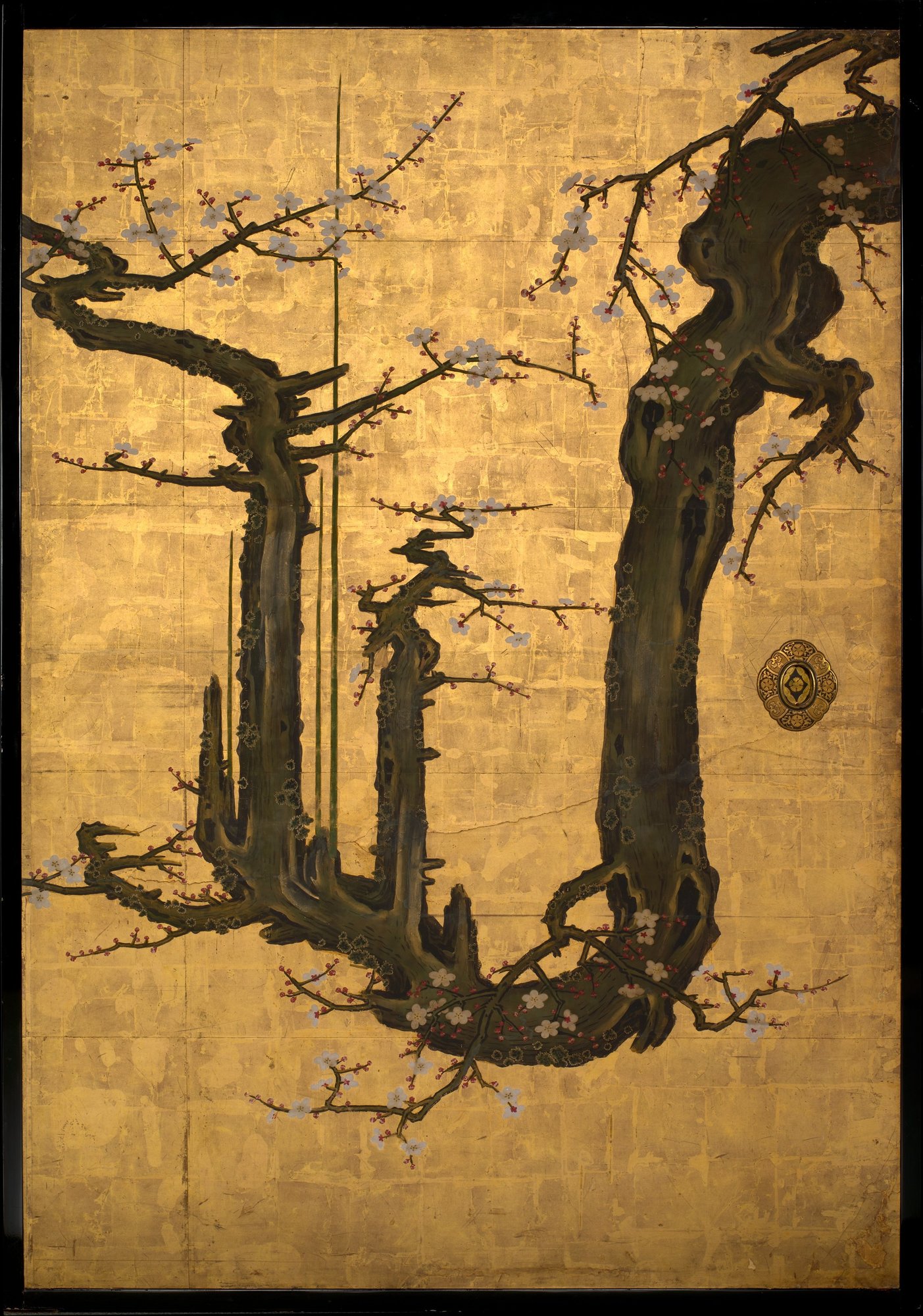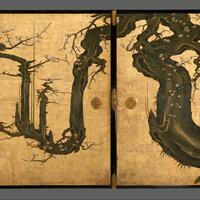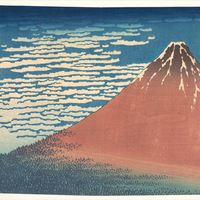More about Kanō Sansetsu
Works by Kanō Sansetsu

Contributor
No relation to the Mortal Kombat character who rips out hearts or complete skeletons out of his enemies. Sansetsu’s legacy is much less bloody.
Sansetsu was one of many in Japan’s longest-lived school of painting and its most influential, spanning three hundred years. Founded by Kanô Masonobu in Kyoto, the school’s style evolved over the years, first using the monochrome, minimal Chinese styles that were prominent in the founder’s time, adding color and gold leaf as background as time went on. The Kanô school was funded by patrons of every affluent social class throughout its life, largely in part to the school’s closeness to the Zen clergy, who themselves had close ties to the shogunate. As the shogunate rose in power, so did the Kano school.
Born Heshiro Mitsue, his father died at the age of 16. Mitsue’s uncle asked Kanô Sanraku, founder of the Kyoto branch of the Kano school, to adopt him as pupil. Eventually, the adopted child married Sanraku’s daughter, officially becoming a member of the Kano bloodline and adopting the name Sansetsu. He succeeded Sanraku as the leader of the Kyoto branch of the Kano school following his death in 1635. The heir to the Kano line was the chief compiler of the Honchô gashi, Japan’s first catalogue of paintings and fine art, which was continued by his son, Einô.
Allegedly one of his most famous works, Old Plum, reflects his bitter and salty disposition concerning the decline of the Kyoto school following the rise of the Tokugawa shogunate in 1600. Edo was chosen as the residence of the shogun and the new capital of Japan. Where the shogun lived, the richest patrons lived, and so did the money and fame follow. The Kano branch in Edo gained more prominence as a result.
The Kano school waned in popularity and became a more conservative institution as the 1800s approached and more down-to-earth, everyday subject matter became the norm in Japanese art.
Sources
- “Harry G. C. Packard.” 2014. Geni. November 1, 2014. https://www.geni.com/people/Harry-G-C-Packard/384219913110002202.
- “Kano Sansetsu | Old Plum | Japan | Edo Period (1615-1868) .” n.d. Metmuseum.org. Accessed October 23, 2018. https://www.metmuseum.org/art/collection/search/44858.
- “Kataoka Naoharu | Revolvy.com.” n.d. Revolvy.com. Revolvy, LLC. Accessed October 23, 2018. https://www.revolvy.com/page/Kataoka-Naoharu.
- “Kataoka, Naoharu.” 2013. Kataoka, Naoharu | Portraits of Modern Japanese Historical Figures. National Diet Library, Japan. 2013. http://www.ndl.go.jp/portrait/e/datas/410.html?cat=166.
- “Shōwa Financial Crisis | Revolvy.com.” n.d. Revolvy. Revolvy, LLC. Accessed October 23, 2018. https://www.revolvy.com/page/Shōwa-financial-crisis.

Contributor
Kano Sansetsu lived a pretty vanilla life, which is why its ending left us all a little confused.
Born in Hizen Province, Kyūshū as Heishiro Mitsuie, Kanō Sansetsu’s life played out like the plot of an average rags to riches daytime TV movie. When he was sixteen his father passed away, leaving his uncle to look after him; said uncle would be responsible for making Sansetsu into a star: not as big as Hokusai, but pretty big. He asked Kanō Sanraku (similar name, totally different guy), head of the famous Kanō school of painting to take his nephew on as a pupil, to which he agreed.
Sanraku thought Sansetsu was a pretty awesome and talented painter, so much so that he let Sansetsu marry his daughter. He even officially adopted Sansetsu and named him his successor as head of the Kanō School after the death of his own son - which was a pretty big deal, since the Kanō School was the most influential painting school in Japan for over 300 years.Sansetsu continued painting Chinese themes and landscapes and went on to create his masterwork now housed at The Met, The Old Plum Tree, painted on sliding door panels, towards the end of his life.
A happy end to a rather uneventful life. Well, what happened next had us scratching our heads. Sansetsu - by all indications a hermit, recluse painter - was, inexplicably, sent to prison one day, and died soon afterwards. We know he was in Kyoto but we don't know why. All we can do is give our best guess, which is that the shōgun of the time was so offended by the lizard-y appearance of Sansetsu’s plum tree branches that he felt obligated to send him to jail. Other opinions are welcome.
So what has Kano Sansetsu left for us? Beautiful artifacts of Japanese painting with a hint of criminality and a splash of mystery, that’s what.
Sources
- “Biography of Japanese Painter: Kano Sansetsu (1589 - 1651),”Jyuluck-Do Corperation, Accessed Aug 2018, http://jyuluck-do.com/profile_kano_sansetsu.html
- Florian Turgeon, “'Special Exhibition: Kano Sanraku and Sansetsu',” The Japan Times, Mar 28 2013, Accessed Aug 2018, https://www.japantimes.co.jp/culture/2013/03/28/arts/openings-outside-t…
- Matthew Larking, “Idiosyncrasies of the Kano school explored in Kyoto,” The Japan Times, Apr 11 2013, Accessed Aug 2018, https://www.japantimes.co.jp/culture/2013/04/11/arts/idiosyncrasies-of-…
- Department of Asian Art, “The Kano School of Painting,” The Metropolitan Museum of Art, i.e. The Met Museum. Oct. 2003, Accessed Aug 2018, https://www.metmuseum.org/toah/hd/kano/hd_kano.htm.
- “The Old Plum|About the Works|TSUZURI Project,” Canon Global, Accessed Aug 2018, https://global.canon/en/tsuzuri/works/03.html
- ”About Kanō Sansetsu,” UpClosed, Accessed Aug 2018, https://upclosed.com/people/kano-sansetsu/
Featured Content
Here is what Wikipedia says about Kanō Sansetsu


Kanō Sansetsu (狩野 山雪, 1589–1651) was a Japanese painter also known as Kanō Heishiro. He was born in Hizen Province, Kyūshū, and died in Kyoto.
Check out the full Wikipedia article about Kanō Sansetsu












